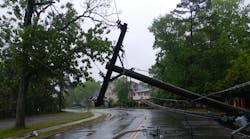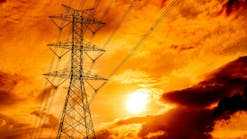Using IIoT Applications to Prepare for and Mitigate Risk from Natural Disasters
Disasters have caused more than US$1.4 trillion in damage and affected 1.7 billion people over the past 10 years, according to the United Nations Office for Disaster Risk Reduction. In 2018 alone, there were 14 disasters exceeding US$1 billion in damage, including more Pacific storms than we’ve seen in the last 25 years and more California acres burned in 2018 than in the past decade.
From storms to floods to fires, the devastation caused by these disasters have a serious impact on critical infrastructure. Now, more than ever, we need to focus on creating resilient communities that bounce back after natural disasters, predict issues before they become major problems, and restore power much faster while keeping citizens informed.
Thanks to advances in technology, communities are responding to disasters in ways they never have before. Industrial Internet of Things (IIoT) applications are revolutionizing disaster prediction and response, thereby helping communities increase reliability and safety during disasters and gain insights that were previously unavailable — all while promoting the quality of life, safety and well-being of citizens.
Predict and prepare
Advanced communities are using IIoT applications to help mitigate risks before natural disasters make their landfall. For instance, IIoT applications that enable grid awareness help utilities better understand the state of their electrical distribution system. With these applications, utilities can spot issues and fix them before they create unsafe conditions, aiding in the prediction and preparation of natural disasters.
For example, a utility pole sensor can detect if a pole is down, which could lead to safety issues, such as a fire. Knowing what poles are down and where is helpful with speeding restoration efforts and can increase response times to those that need attention. Similarly, line sensors can monitor for issues or hazardous situations on the distribution line. Monitoring solutions, such as voltage analysis and distribution transformer monitoring, can evaluate the health of devices on the grid to ensure they aren’t failing, which could create a potential safety issue.
Further, advanced line sensors in the network can enable utilities to anticipate where problems will develop with visibility into intermittent interference from vegetation, equipment not functioning properly, loose connections or heat buildup in the system. Being able to anticipate or detect where fires might occur, where damage is detected in the system, allows the utility or city to de-energize systems and dispatch crews more effectively.
When an earthquake occurs, a natural gas leak can be a likely and dangerous outcome that utilities must be vigilant in monitoring and responding to. With methane detection technologies, a leak can be detected and crews can repair it before it becomes a hazardous situation.
A key outcome of the Disaster Recovery Reform Act passed in October 2018 allows for greater investment in disaster mitigation. Now, with a reliable stream of sufficient funding, communities are able to plan and execute mitigation programs to reduce disaster risk nationwide. Cities can invest their grants in the most modern, resilient infrastructure – an option they didn’t have before.
Respond and recover
Advanced communities are turning to IIoT applications to help during and after natural disasters. IIoT applications enable communities to more quickly and effectively respond to the impacts of a disaster, including outages. Outage detection helps improve response times with real-time intelligence, allowing utilities to accurately understand the size and extent of an outage and what locations are impacted. This also helps with restoration by validating and continuously updating outage extents.
Another example of an IIoT application that aids in natural disaster mitigation are smart meters. With smart meters, utilities know instantly when the power is out, thanks to built-in intelligence, which sends an outage alert as soon as the power goes out. Before smart meters, utilities relied on a phone call to know the power was out. Such antiquated methods are no longer efficient for consumers today, who have become accustomed to and expect real-time response and action with any service downtime.
Additionally, IIoT applications allow communities to recover much faster from outages. In fact, in Houston, when Hurricane Harvey made landfall in August 2017, more than 250,000 people in Texas lost power. Equipped with smart grid technology prior to this disaster, CenterPoint Energy was able to recover and reconnect people to power quickly, avoiding an estimated 45 million outage minutes for its customers. Distribution automation devices, such as intelligent grid switches, allowed the utility to quickly isolate problems on its grid and restore service to customers.
Resiliency priorities
The priority must be ensuring cities’ infrastructures are as future-proofed as possible to help alleviate damage from natural disasters and respond as effectively as possible once they hit. With a rapidly evolving technology landscape, today’s utility industry can connect millions of meters and smart devices that work together seamlessly to help prepare and mitigate risks of natural disasters, while laying the foundation for a more resourceful, innovative future.


